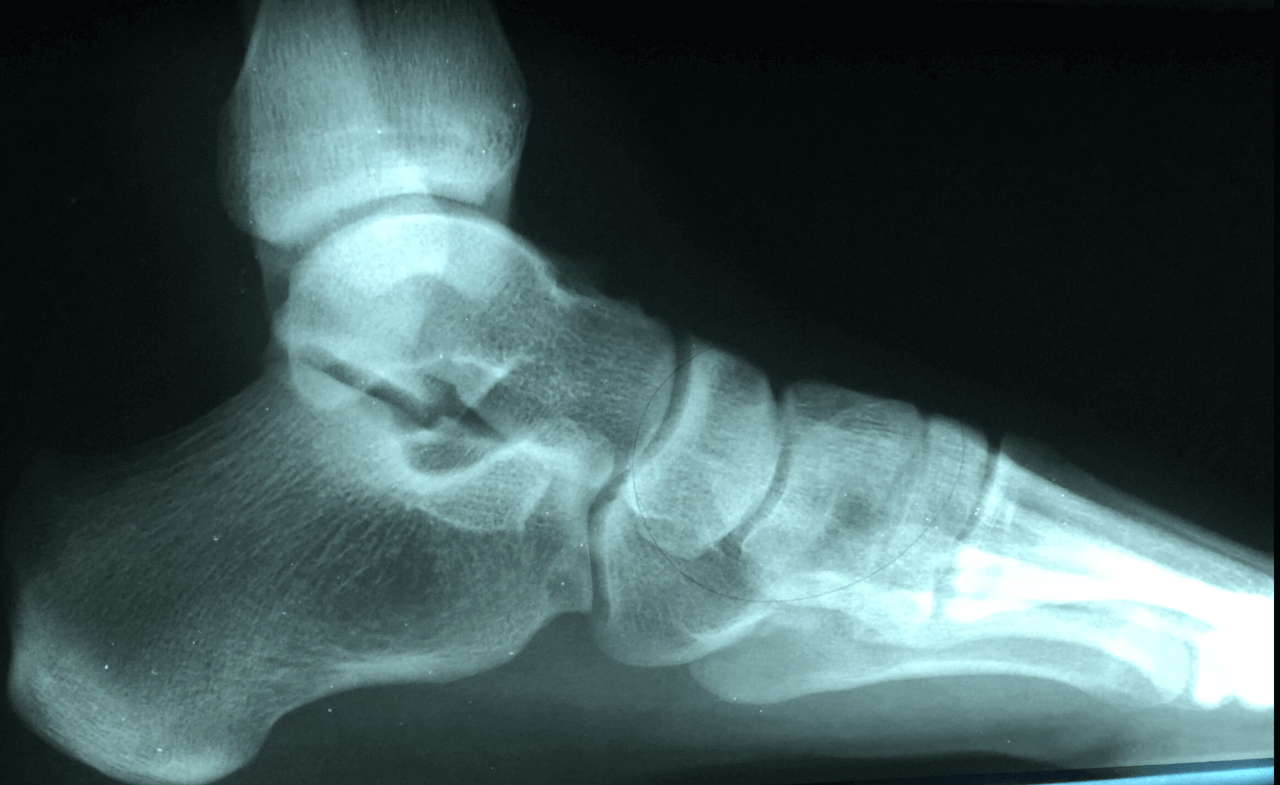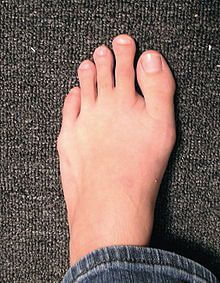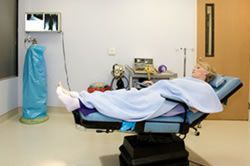issaquah foot and ankle specialists
Displaying items by tag: issaquah foot and ankle specialists
Dr Brandon Nelson, A Board-Certified Physician & Surgeon Discusses Heel Pain and When to See A Foot & Ankle Specialist

Are you currently suffering with heel pain? I can remember those days not long ago for me. I would wake up in the morning and that first step pain was terrible. It would take a couple minutes and it would finally loosen up only to return every time I sat down. Does this sound familiar? If so, you probably have plantar fasciitis. The big question is when to see a foot and ankle specialist, the answer is now.
The sooner you get in to seek treatment the faster your recovery will be. With procrastination the inflammation gets worse, and you will take longer to recover. I tell all my patients the sooner we initiate treatment the faster we can get you back to enjoying the things you like.
Treatment of plantar fasciitis usually starts with a review of your activities. What are you currently doing for exercise and how often? Have there been any recent changes? I like to get an x-ray to check for bone spurs and arthritis. A good overall examination of the foot structure and lower leg can be helpful along with any treatments that have been tried. If the diagnosis is still plantar fasciitis then the average patient I see will be about 50% better in less than a week with the first line of therapy.
If you have heel pain, you know how uncomfortable it can be. If you would like a consultation on your heel pain, I can help. Call to make an appointment with me at 425-391-8666 or schedule an appointment online.
Sincerely,
Dr Brandon Nelson
Dr Brandon Nelson, A Board Certified Foot & Ankle Physician and Surgeon, Discusses Hammer Toes

Hammer toes are a condition that affects usually multiple toes in the foot. This condition can occur on one foot or both. It is often part of an overall deformity of the foot for example a bunion with hammer toes is common. There tends to be a family history of hammer toes and pain can begin as the condition worsens. Often patients will present with pain from shoe gear rubbing or pain with activities like running. The hammer toes are a progressive deformity and I encourage early intervention to manage the deformity.
The most common cause of hammer toes is the foot trying to stabilize itself. Often the long flexor tendons of the foot are working to create an arch or support the arch. Patients often have a flatfoot associated with this pathology and the hammer toes start to progress as the foot becomes flatter. The foot works hard to try and stop the flattening and the flexor tendons begin to overpower the digits. The digits begin to curt and hammering is the result.
The only long-term fix of hammer toes is surgical. The procedure itself is relatively straightforward and quick. It involves removing a piece of bone and often lengthening a tendon or releasing some soft tissues. It is a stepwise approach to the hammer toe that provides the best long-term outcomes. I have patients that choose to have it done with just some local anesthetic and the recovery is uneventful.
If you are suffering from curling digits and need an evaluation I can help. Please contact the office at 425-391-8666 or make an appointment online today.
Sincerely,
Board Certified Physician and Surgeon
Dr. Timothy Young, a Board-Certified Foot Surgeon, Discusses Evaluation of Bone Healing Status

Dr. Timothy Young, a board-certified foot surgeon, discusses evaluation of bone healing status.
How does your surgeon know when bone healing is adequate for unprotected weight-bearing for example if you have had bunion surgery and the bones were cut (osteotomy), then it’s important to stay in a protected boot or surgical shoe until there’s adequate bone healing. Typical bone healing takes approximately eight weeks for a healthy adult that can be less for young adult or teenager. X-rays can be helpful. A CT scan also can be helpful but can be quite expensive and often has artifact due to retained hardware causing magnetic interference with the imaging. One additional tool that I like to utilize is ultrasound imaging.
Ultrasound imaging can show subtle areas of bone bridging that you cannot see with a conventional radiograph. X-ray findings often lag behind the actual bone healing status. So, determining bone healing is always a challenge and based on a number of different indications such as age and health of the patient, appearance of x-rays, and post operative time frames. Oftentimes I can get a better assessment of the actual bone healing by utilizing ultrasound imaging. This often allows me to have our patients get out of their boot or cast earlier and then if I had to rely on x-rays alone.
If you are experiencing foot or ankle pain, give us a call today at 425-391-8666 or make an appointment online.
Dr. Brandon Nelson, Board-Certified Foot and Ankle Surgeon, Discusses the Management of Morton’s Neuromas

Morton’s neuromas or interdigital neuromas are usually from a compression of the nerves in the front of the foot. Oftentimes characterized as burning or pain that’s exacerbated by walking or tight shoes. A number of different etiologies have been described to decrease blood supply progression to irritation from bursa or the intermetatarsal ligament. The majority of these neuromas occurr in the third interspace, about 70% of the time and in the second interspace about 30% of the time. It is most common to have a single neuroma however some patients have multiple neuromas. There are multiple studies on the best conservative measures.
Conservative measures range from orthotics, footwear adjustments, corticosteroid injections, alcohol injections, radiofrequency or even cryoablation. Conservative management continues to be the mainstay of neuroma therapy. Oftentimes it can take months before your neuroma feels better depending on the size and location. There are a few people that have multiple Morton’s neuroma and an MRI can be highly valuable.
Surgical management usually consists of removal of the nerve. This is generally done to the top of the foot and has a fairly short recovery as compared to other foot and ankle surgeries. Sound physicians go to the bottom of their feet just depending on experience and discomfort levels. The overall success rate with surgical management is high, if conservative measures have failed, it is the appropriate next step.
If you’re suffering from neuroma pain make an appointment today and I can help. Give us a call at 425-391-8666 or make an appointment online today.
Sincerely,
Board-Certified Foot and Ankle Physician and Surgeon
Dr. Brandon Nelson, Board-Certified Foot and Ankle Physician and Surgeon, Discusses Minimally Invasive Bunion Surgery

Bunion surgery has progressed significantly since its inception. Years ago, it was not uncommon for patients to stay overnight in the hospital if they had bunion surgery. Often times patients would spend days in the hospital and be in a cast and nonweightbearing for months. However this is a very rare occurrence these days and the majority of procedures are performed in an outpatient setting and very rarely is there an extended period of nonweightbearing. This evolution of bunion surgery has allowed for minimally invasive surgeries to become more commonplace.
Minimally invasive refers to making significantly smaller incisions than we’ll we typically do for bunion surgery. The average bunion can now be performed with minimally invasive surgery through an approximate 2 cm incision. The advantages of minimally invasive surgery is it allows for a quicker recovery and increased healing capacity. The majority of people will heal more quickly than the traditional open bunion procedure and will have less pain.
It is important to note that not every patient is a candidate for minimally invasive bunion surgery as it depends on other factors including overall foot structure and size of the bunion. It is important to have a thorough evaluation and workup for considering bunion surgery, any type of bunion surgery including minimally invasive. If you’re having bunion pain please contact my office and we will be able to get to an appointment and have your bunion evaluated. Give us a call at 425-391-8666 or make an appointment online today.
Sincerely,
Board-certified Foot and Ankle Physician and Surgeon
Dr. Brandon Nelson, Board-Certified Foot and Ankle Surgeon discusses Minimally Invasive Bunion Surgery

A bunion is a common forefoot condition that can be characterized by mild, moderate or severe and defined as a deviation of the big toe in the lateral direction. This condition is progressive and can lead to pain and discomfort with walking and exercise. Conservative measures are not usually successful. The traditional approach consists of an open incision and dissection of the foot that involves balancing of soft tissues and bony deformities. The procedure itself is highly successful but there is question as to whether more minimally invasive type accessible.
Minimally invasive bunion surgery has been around for years and as this technique is getting better, this becomes more of a promising type procedure. The literature is full of different types of minimally invasive bunion surgeries that can be used correct the foot. Some of the most promising new or techniques utilize screw or pin fixation and has become highly successful.
All done under direct live x-ray and results have been extremely positive. Majority of patients are weightbearing immediately after surgery and can return to normal shoes in 3-4 weeks. This is because of the soft tissues had minimal interruption and vascularity preserved. Minimally invasive bunion surgery shows promising results and can provide a fast return to activities.
If you’re suffering from bunion deformity and would like to discuss minimally invasive bunion procedure, call 425- 391-8666 or make an appointment online today.
Sincerely,
Dr. Brandon Nelson
Board-certified Foot and Ankle Physician and Surgeon
My Heel is Sore All the Time!

Heel pain continues to be the most common reason a person visits the foot and ankle doctor or podiatrist. For us it constitutes about 1 out of every 4 patients and is one of the most important things we treat. We specialize in heel pain and have seen tens of thousands of patients for it. Our success rate with conservative measures to get rid of heel pain is close to 99%, very few people require surgical intervention.
Plantar fasciitis continues to be the number one cause of heel pain. Most people will get pain first things when they get out of bed in the morning or after standing for long periods. It is common for some with fasciitis to not have morning pain. There also is a correlation with a new exercise program and the development of plantar fasciitis. I always recommend getting in early to see us as it is much easier to treat early on.
Bursitis is another very common cause of heel pain. We often see this in a high arched foot or a runner. Patients will have symptoms like plantar fasciitis but usually on ultrasound we can see the bursal sack. Bursitis usually responds very well to the treatment program we provide and very few people need to sideline their activities.
Nerve entrapments can also create heel pain. This is usually a nerve called Baxter’s nerve. Most people will experience a lot of burning and tingling with this condition. However, this can be a tricky diagnosis and may require special testing. This condition can respond well to a steroid injection adjacent to the nerve.
If you are experiencing heel pain we are here to help give us a call at 425-391-8666 or make an appointment online today.
Dr. Brandon Nelson, Discusses How To Get Through Bunion Surgery

Bunion surgery can be overwhelming when one starts to think of all the logistics. It is important to start planning early in order to maximize outcomes and have a smooth recovery period. I have some advice that I think can be quite helpful for patients thinking about bunion surgery. Here are my top 10 tips:
1. Make a list of expectations for your surgeon. Bring a list to your preop and we are always happy to go through these.
2. Take a week off, be a couch potato. Sacrifice upfront will make it easier in the long run.
3. Know that you will have pain, discuss any concerns with your surgeon. Have all our pain meds/rxs filled before surgery.
4. Plan how you will get around, crutches, knee scooter, etc.
5. Have a central place in your house set up. Make it close to the bathroom and anything you will need to be comfortable.
6. Take a bone healing supplement this will decrease healing times.
7. Start your toe range of motion early this will help with stiffness.
8. Plan how you will shower, sleep and use the toilet.
9. Purchase some bandages, 4x4 gauze and coban.
10. Look at your post-op surgical schedule, when will you start walking, start ROM, be able to shower, etc.
Well I hope this is helpful and goodluck!
If you are experiencing foot or ankle pain, give us a call today at 425-391-8666 or make an appointment online today.
Dr. Brandon Nelson Discusses When the Best Time to Have Bunion Surgery Is

Surgery can be quite a bit to think about. Patients need to make work arrangements and plan with family and sometimes even friends. Especially if it is your first time having surgery it can feel like a lot. We at Issaquah Foot & Ankle Specialists have helped so many patients with surgery that our process makes it extremely easy and relaxing. We will help every step of the way. We provide a surgical binder that has everything you need and will make sure that you get all the assistance you need to make the process feel simple.
I think the most important part of planning when to have surgery is simply preparation. I tell most of my patients to think ahead and figure out when the slowest time of year is for you with both family and work. This is not always possible so the good news is we are here to help. The majority of procedures will allow patients to get back to activities in a few days. We have years of experience and can provide answers to any questions or concerns you may have.
The surgical process is easy as well. We have an onsite surgery center and most of the time you will be at the office for just a couple hours. We have dedicated rooms and staff that will assist you the entire time. If you are contemplating having your bunion fixed or having your neuroma or hammertoes corrected, we can help. Give us a call today at 425-391-8666 or make an appointment online.
Dr. Timothy Young Talks About Prescriptions and Post Procedure Pain Medication

Make sure to get your prescriptions well before bunion surgery, so that they are filled, and you are ready to go. Make sure that you have everything that you need. This can range from narcotic pain medication to something to help for nausea that often accompanies the narcotic pain medication and then you might need antibiotics. If you have antibiotic's we do recommend that you take a probiotic also.
Regarding narcotic pain medication and bunion pain relief, it’s a good idea to consider promethazine or even Benadryl. Nausea with narcotics is common and it is best to have a plan to make sure that you can address nausea or be proactive, so it never happens! Medications such as promethazine and can help with nausea. Promethazine can also make a narcotic medication more effective at pain control. Promethazine can cause respiratory depression and it is important to follow your medical advice. We have lowered our dose of Promethazine from 25mg to 12.5 mg to help address concerns with respiratory depression. There are other medications such as Zofran that also help with nausea. Zofran is great because there is an "under the tounge" form that is great if you are already nauseated and cannot keep food down. That beats a suppository! Be aware that many people who take any kind of narcotic such as Vicodin or Percocet often get nausea. You should take promethazine with food and wait 10 or 15 minutes before you take your narcotic pain medication. It can be easy to lose track of what medications that you have taken and when you have taken them. It’s a good idea to keep a medication log so you can keep track of the pain medication also and make sure that you’re taking them on time with the correct schedule.
If you have questions about hallux valgus bunion surgery or bunion correction, please let us know if you would like a consultation. Give us a call today at 425-391-8666 or make an appointment online.



